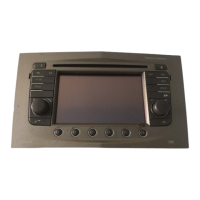
Do you have a question about the Vauxhall 2012 Agila and is the answer not in the manual?
| Brand | Vauxhall |
|---|---|
| Model | 2012 Agila |
| Category | Automobile |
| Language | English |
Enter vehicle data for easy access in Service & Maintenance and Technical sections.
Guidance on navigating the manual, including TOC, index, and key features.
Explanation of danger, warning, and caution symbols for safe operation.
Unlocking the vehicle with key or remote, and central locking system features.
Adjusting seats, backrests, head restraints, and seat belts for safety.
Guide to adjusting exterior mirrors and the steering wheel for optimal position.
Layout of the instrument panel and operation of its various controls.
Operation of exterior lights, turn signals, and hazard warning flashers.
Using wiper/washer systems and basic climate control functions.
Details on manual/automatic transmission and starting the engine.
Guidance on how to park the vehicle safely and correctly.
Information on keys, locks, replacement keys, and radio remote control.
Details on unlocking/locking doors and tailgate via key or remote.
How to use interior door locks and the child safety lock feature.
Instructions for opening, closing, and emergency release of the load compartment.
Information on anti-theft locking systems and the immobiliser.
Guide to manual, electric, and folding adjustments for exterior mirrors.
Details on manual anti-dazzle interior mirrors and manual/power windows.
Using the child safety system and operating the heated rear window.
Proper positioning and height adjustment for front and rear head restraints.
Guidance on adjusting front seat position, backrest, height, and steering wheel.
Information on seat belt operation, reminders, belt force limiters, and tensioners.
Instructions on fitting and adjusting the three-point seat belt.
Explanation of the airbag system, including front airbag system.
Guidelines for using child restraint systems and selecting the right one.
Permissible locations for fitting child restraint systems, including ISOFIX.
How to use instrument panel tray, glovebox, and sunglasses storage.
Procedure for folding rear backrests and managing load compartment covers.
Fitting rear floor storage and stowing the warning triangle.
Information on roof racks and proper loading guidelines for safety.
Adjusting the steering wheel and using steering wheel mounted infotainment controls.
Using the horn, windscreen wipers, and washers.
Climate control operations and setting the vehicle clock.
Using power outlets, cigarette lighter, and understanding gauges like speedometer.
Reading the odometer, tachometer, and fuel gauge for vehicle status.
Interpreting control indicator lights and the service display messages.
Explanation of common warning lights for turn signals, seat belts, and airbags.
Understanding indicators for charging, brake, ABS, and power steering system faults.
Interpreting engine coolant, oil pressure, low fuel, and immobiliser indicators.
Using trip computer for range, average, and instantaneous consumption.
Operation of light switch for headlights, sidelights, and high beam.
Using high beam, headlight flash, and adjusting headlight range.
Operation of turn signals, fog lights, and hazard warning flashers.
Using interior lights, load compartment lighting, and handling misted covers.
Overview of the infotainment system and setup of its theft-deterrent security ID.
Basic operations: switching on/off, volume, mute, and sound settings.
Operating radio modes, automatic search, and storing stations.
Understanding AF, REG, PTY, TA, PS, and EON for optimal radio reception.
Operating the CD/MP3 player, including track selection and playback modes.
Guidelines for installing and operating mobile phones and CB radio equipment.
Controls for temperature, air distribution, and fan speed in the climate system.
Operating the cooling system, air recirculation, and maximum cooling settings.
Methods for demisting windows and using adjustable/fixed air vents.
Ensuring efficient climate control performance through regular maintenance and service.
Essential driving hints and recommendations for running in a new vehicle.
Understanding ignition, starting procedures, and the stop-start system.
Procedures for restarting the engine and guidance on parking the vehicle.
Safety on exhaust gases, catalytic converter, and fuel types/refuelling.
Details on the selector lever, transmission display, and gear selection.
Operating manual transmission and understanding the brake system.
How ABS works, using the parking brake, and the function of brake assist.
Operation and deactivation of Traction Control (TC) and Electronic Stability Program (ESP).
Correct fuel types, refuelling safety precautions, and fuel consumption data.
Recommendations for accessories, modifications, and long-term vehicle storage.
Performing engine compartment checks and how to open/close the bonnet.
Checking engine oil, coolant, and washer fluid levels, and brake fluid.
Maintaining battery health, replacement, and warning labels.
Instructions for replacing vehicle bulbs and wiper blades.
Replacing bulbs for headlights, fog lights, turn signals, and tail lights.
Locating fuse boxes, replacing fuses, and using the fuse extractor tool.
Locating vehicle tools, tyre repair kit, and spare wheel.
Checking tyre condition, pressure, designations, and changing tyre size.
Using tyre chains, the tyre repair kit, and changing a vehicle wheel.
Safety and procedure for jump starting and towing the vehicle.
Washing, polishing, waxing, and cleaning exterior parts like locks and lights.
Cleaning the vehicle interior, upholstery, and plastic/rubber parts.
Importance of timely maintenance and understanding service intervals and displays.
Guidelines for selecting engine oil, coolant, antifreeze, and brake fluid.
Choosing the correct engine oil quality and viscosity grade.
Information on coolant concentration and brake fluid properties and maintenance.
Locating and understanding the VIN and details on the identification plate.
Recommended engine oil, viscosity grades, and engine data.
Kerb weights and overall vehicle dimensions for different models.
Fluid capacities and detailed tyre pressure recommendations for various conditions.
Information on event data recorders and data privacy policies.
Explanation of RFID technology used for vehicle functions and conveniences.











